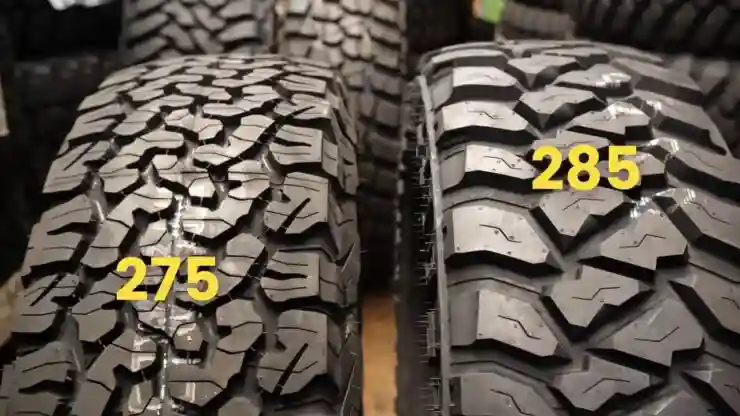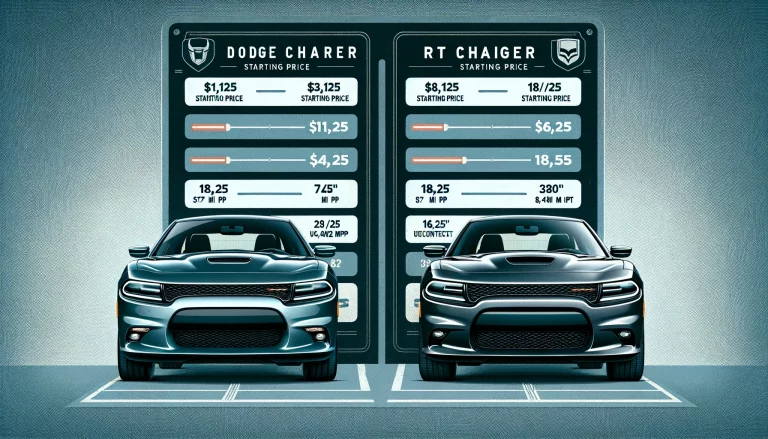Difference between 285 and 275 tires
When selecting new tires, one of the most important considerations is the tire width, specified by the first number in the tire size. Two common options are 275 and 285 width tires. But what is the actual difference between 275 and 285 tires, and how does tire width impact performance?
In this guide, we will compare 275 vs 285 tires to understand the differences in tire construction, intended usage, handling, off-road capabilities, and overall performance. Whether you drive a truck, SUV, or sedan, insights on the pros and cons of these tire widths will help you choose the right option.
Here is a detailed comparison table highlighting the key differences between 275 and 285 tires:
| Factor | 275 Tires | 285 Tires |
|---|---|---|
| Width | 10.8 inches | 11.2 inches |
| Contact Patch | Narrower | Wider |
| Traction | Less grip, more prone to hydroplaning | More traction and grip, especially in wet conditions |
| Handling | Requires less steering effort, less grip when cornering at high speeds | More resistant to sliding, better cornering and lateral grip |
| Ride Quality | Smoother, more comfortable ride | Slightly stiffer ride |
| Off-Road Ability | Less traction on loose surfaces, higher risk of getting stuck | Better performance on mud, dirt, gravel, etc. |
| Fuel Efficiency | Better fuel mileage due to lower rolling resistance | Slightly lower MPG rating |
| Acceleration | Faster acceleration and top speed | More rotational mass hampers initial acceleration |
| Ideal Usage | Everyday driving, highway use, city commuting | Off-roading, heavy cargo or towing |
| Cost | Less expensive as uses less rubber | More costly due to higher materials |
| Appearance | Subtler look preferred by some | Aggressive, rugged aesthetics |
| OE Spec Fitment | More likely to match factory size | May require lift kit or trimming if rubbing |
| Speedometer | Marginally less effect on accuracy | Causes slightly higher speedometer readings |
Tire Sizes
A tire size like 275/65R18 breaks down as follows:
- 275 – The width of the tire in millimeters when mounted and measured. Wider tires like 285 have larger contact patches.
- 65 – The aspect ratio, or the tire’s height as a percentage of its width.
- R – Radial tire construction with plies running perpendicular to direction of travel.
- 18 – The diameter of the wheel rim in inches.
The width is the key factor that differs between 275 and 285 tires. But what does a 10mm difference in width actually mean for your vehicle? Let’s explore this next.
Tire Width Comparison: 275 vs 285
The primary difference between 275 and 285 tires lies in the actual width of the tire when mounted on the wheel.
- 275 tires have a tread width of approximately 10.8 inches. They are considered a narrower tire size.
- 285 tires have a tread width of around 11.2 inches. They represent a wider tire.
Those extra 10mm or 0.4 inches give 285 tires a larger contact patch and footprint on the road. This width difference has an impact on various performance factors.
Pros of 285 Tires
- Better traction, grip, and control in wet, snowy, or off-road conditions.
- Improved cornering abilities and lateral grip when turning aggressively.
- More stable at highway speeds and during evasive maneuvers.
- Increased load capacity – can handle heavier cargo or towing weight.
- More durable with ability to resist punctures and damage.
- Aggressive, rugged appearance valued by some drivers.
Pros of 275 Tires
- Improved fuel efficiency and gas mileage due to less rolling resistance.
- Faster acceleration and higher top speed potential.
- Quieter and smoother ride quality on paved roads.
- Requires less steering input and effort at low speeds.
- Less expensive as narrower tires use less rubber.
- Matches OE spec on many vehicles; may avoid rubbing issues.
Aspect Ratio Comparison
The aspect ratio can also impact performance between 275 and 285 tires, although the difference is usually much smaller.
- Lower aspect ratios like 40 or 45 have a short, stiff sidewall.
- Higher aspect ratios like 65 or 70 have a taller, more flexible sidewall.
Lower aspect ratio 285 tires emphasize handling, while higher ratios favor ride comfort. 275 tires have a similar effect based on aspect ratio. In general:
- 275/65 tires offer a more comfortable ride.
- 285/45 tires provide sharper handling.
Aspect ratio has a very minimal impact on overall tire height between 275 and 285 tires with the same ratio.
Performance and Handling Differences
The wider tread of 285 tires directly affects traction, grip, and overall handling capabilities when compared to 275 tires.
Traction and Grip
The extra contact patch width of 285 tires provides more traction, improving grip on wet, snowy, and off-road terrain. The wider tread distributes driving and braking forces over more area, reducing slippage and instability.
In contrast, the smaller footprint of 275 tires is more prone to hydroplaning on wet roads and lacks grip during loose surface driving. However, their lighter weight does help acceleration traction when taking off from a stop.
Handling and Cornering
The increased traction of wider 285 tires also enhances high-speed stability and cornering grip. During tight turns or evasive maneuvers, the broad contact patch maintains better adhesion, reducing the risk of front or rear end sliding.
Narrower 275 tires tend to have less resistance to lateral slippage when cornering hard. However, they require less steering input which some prefer for low-speed driving and parking lot maneuvers.
Fitment and Modification Considerations
Along with performance differences, 275 and 285 tires also have potential vehicle fitment and modification implications.
Vehicle Compatibility
Always consult your owner’s manual when looking at different tire sizes. Many trucks and SUVs that come equipped with 275-width tires from the factory can safely accommodate 285 upgrades.
However, fitting larger tires may require adjustments if they rub against suspension components or brake calipers at certain steering angles and ride heights. Lower profile tires should also be evaluated for compatibility.
Gearing and Speedometer Accuracy
The slight diameter increase from 275 to 285 tires will cause a small deviation in your speedometer reading. Gearing may need adjustment to match the new effective circumference.
In addition, wider tires have more rotational mass which impacts acceleration performance. Regearing the differentials may help restore responsiveness when upgrading to 285 tires, especially on trucks outfitted with larger engines.



